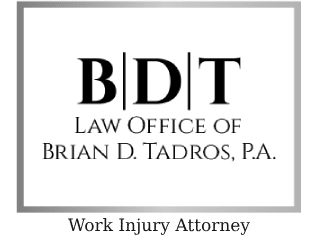
“I’ve been receiving checks from the workers’ comp insurance company ever since my workplace injury, but these payments seem a little low. Are my workers’ comp payments correct?”
In workers’ comp cases, the rate at which your compensation benefits are determined stems from first calculating your average weekly wage (AWW). But your AWW can be calculated in different ways, depending on the facts of your individual case.
Because there is more than one way to calculate your AWW, how do you know whether yours is being calculated correctly? In short, how do you know that your workers’ comp payments are correct?
In this article, we’ll go over some of the different ways that AWW is calculated in various scenarios. If you feel that your AWW or workers comp payments are incorrect, you should schedule a consultation with Brian Tadros to look into the details of your case.
How Much Did You Work?
The starting point is looking at the 13 calendar weeks of wages prior to the calendar week of your accident.
If you worked at least 75% of the total customary hours during that time period, you will simply add up your wages over those 13 weeks and then divide by 13 to determine the average weekly wage.

For example, let’s say Stephanie earned $500 a week, but got a promotion which raised her weekly paycheck to $750. Two weeks later, she was injured and filed a workers’ comp claim. Because she earned $500 for 11 of the past 13 weeks and $750 for two of them, her AWW will be calculated as such:
500 x 11 = 5,500
750 x 2 = 1,500
5,500 + 1,500 = 7,000
7,000 / 13 = $538.46
The longer she works at the higher paying rate before her injury, the more she would (theoretically) receive in workers’ comp payments.
Getting an average of your earnings over 13 weeks prevents either you or your employer from picking a high-paying or low-paying week and labeling it as your “average weekly wage.” It would not be fair to Stephanie if her employer listed her AWW as $500, nor would it be fair for the insurance company if Stephanie insisted that her AWW was $750 after only a couple weeks of work.
However, this calculation is all contingent on whether the employee worked 75% of the total customary hours for that job during those weeks. If they did not work at least 75% of the normal hours during the 13 calendar weeks preceding the on-the-job accident (for example, you were a recent hire), there are other methods for calculating your AWW.
Injured at Work In Florida?
What If I Didn’t Work 75% of The Normal Hours?
If you did not work 75% of the normal customary hours for your job during the 13 weeks preceding your workplace accident, there are several methods that can be used to determine your AWW…and there is a standard sequence for examining them.
The first method is to use the wages of a similar employee.

However, what constitutes a similar employee can be an issue in and of itself. For instance, if you have been with the company for 15 years, make $25.00 per hour, and normally work 50 hours per week, a brand new hire making $11.00 per hour and only working part-time would not constitute a “similar employee.”
If a true similar employee exists, you follow the same “13-week method” outlined earlier, using that employee’s wages for the same time period.
What about seasonal employment? The law states that you use the calendar year or the 52 weeks immediately preceding your accident to calculate your AWW. Unfortunately, the law states that the employee has “the burden of proving that this method will be more reasonable and fairer” than the options listed above.
If none of the foregoing applies, the full-time wages of the injured worker will be used.
Other Things to Consider
Of course, there might be other relevant circumstances in your case to consider.
If you had a second job during the 13 calendar weeks preceding the calendar week of your industrial accident, those wages need to be included as part of your AWW, especially if your injury prevents you from performing that job as well.

Another consideration is whether or not you had health insurance coverage on the date of the accident and if that coverage was cancelled at any point after the accident. If you had health insurance on the date of the accident that was partially paid for by your employer and the coverage ends, the value the employer paid for your health insurance has to be added into the calculation of your AWW.
The law also specifically states that if an injured worker is under 22 years of age at the time of their accident and under normal conditions, it should be expected that their wages would increase during the period of disability, this may be considered by the judge in determining the correct AWW.
Of course, no matter the circumstances, there is a limit to how much you can earn from workers’ comp. In 2019, the maximum amount was $939/week (for 2020, the maximum amount is set at $971/week). If you are already collecting this amount, you can rest assured that your workers’ comp payments are correct.
Conclusion
The foregoing is all just to determine your correct AWW.
Your AWW is then used to determine all rates for benefits paid to you during the course of your claim. Thus, once you have your correct AWW, you can use that figure to determine the correct compensation rate, your maximum temporary partial disability rate (also called your 80/80 rate) and your impairment income benefit rate.
If the insurance company is offering you a settlement, knowing your average weekly wage is doubly important. The settlement amount is based on what a prolonged court case is likely to cost the insurance company over time. Undervaluing your AWW will result in you receiving a smaller offer.
If you have suffered a work injury, you deserve the full benefits that you are entitled to under the law. Workplace injuries not only affect your on-the-clock performance, they affect your daily duties, earning potential, and your quality of life.
If you believe that your workers’ compensation benefits are not being calculated correctly, you need a qualified attorney on your side. Schedule a free consultation with The Law Office of Brian D. Tadros and receive expert guidance and advice on your case.

